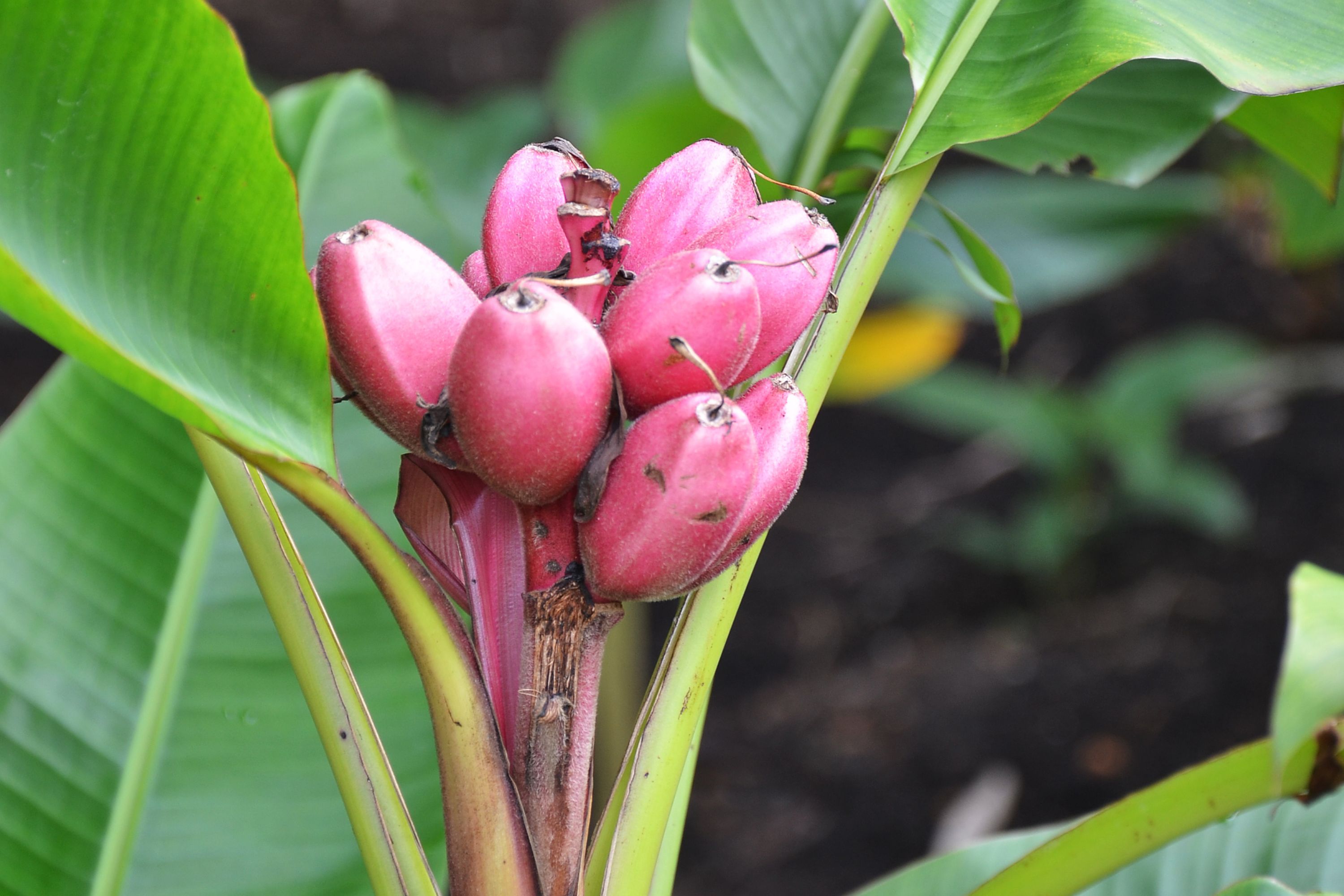Hairy banana
(Musa velutina)

Description
Musa velutina, the hairy banana, or pink banana, is a diploid species of wild banana. These plants are originally from Assam and the eastern Himalayas. The fruits are 3 in (8 cm) long, pink, and fuzzy. They are borne on erect flower stalks with a pink inflorescence. Musa velutina flowers at a young age, doing so within a year. The fruits peel back when ripe. It is often grown as an ornamental plant, but has soft, sweet flesh that can be eaten. The seeds are quite tough and can chip a tooth. To sow, first soak the seeds in warm water for 24 hours. They should be planted in fine compost and kept at a constant temperature of 20°-24 °C (68 to 75.2F) with full natural light. They take up to around 6 months to germinate. Plants may be placed outside during warmer months but should be taken into a conservatory or greenhouse or given other protection in winter. Musa velutina has received the Royal Horticultural Society's Award of Garden Merit. Musa is one of two or three genera in the family Musaceae. The genus includes flowering plants producing edible bananas and plantains. Around 70 species of Musa are known, with a broad variety of uses. Though they grow as high as trees, banana and plantain plants are not woody and their apparent "stem" is made up of the bases of the huge leaf stalks. Thus, they are technically gigantic herbaceous plants. Banana plants represent some of the largest herbaceous plants existing in the present, with some reaching up to 9 metres (30 ft) in height. The large herb is composed of a modified underground stem (rhizome), a false trunk, a network of roots, and a large flower spike. The false trunk is an aggregation of the basal portion of leaf sheathes; it is not until the plant is ready to flower that a true stem grows up through the sheath and droops back down towards the ground. At the end of this stem grows a peduncle with many female flowers protected by large purple-red bracts. The extension of the stem (this part called the rachis) continues growth downward where a terminal male flower grows. The leaves originate from a pseudostem and unroll to show a leaf blade with two lamina halves. Musa reproduces by both sexual (seed) and asexual (suckers) processes, utilizing asexual means when producing sterile (non-seedy) fruits.
Taxonomic tree:







